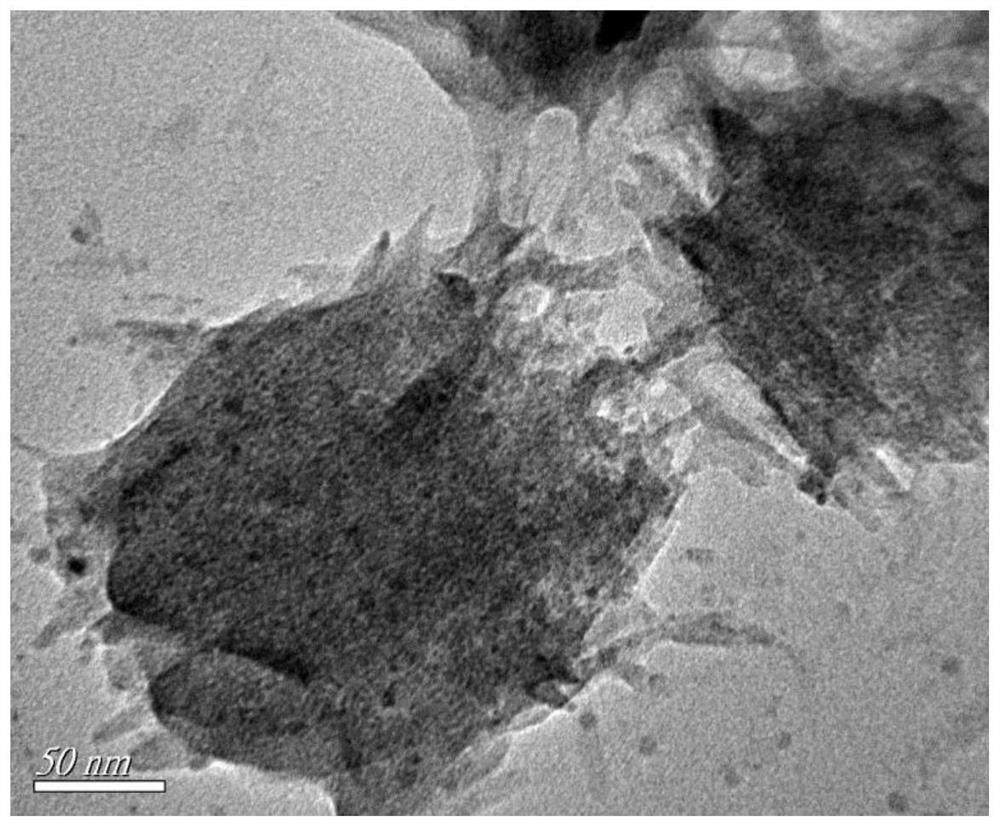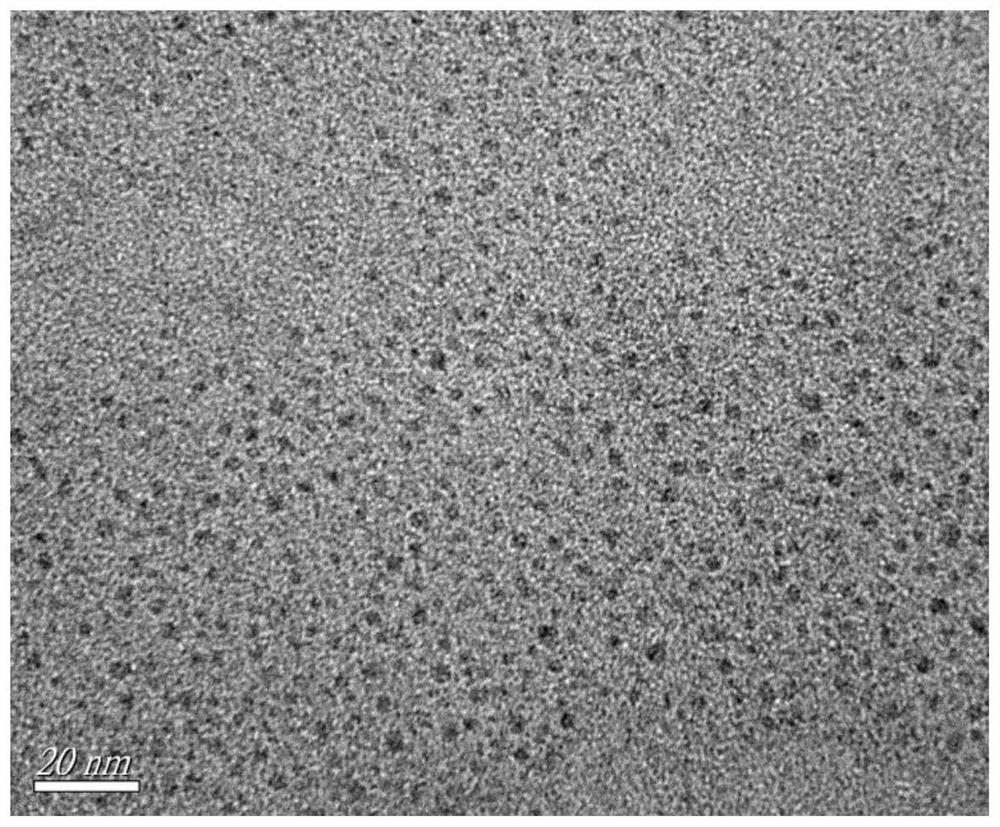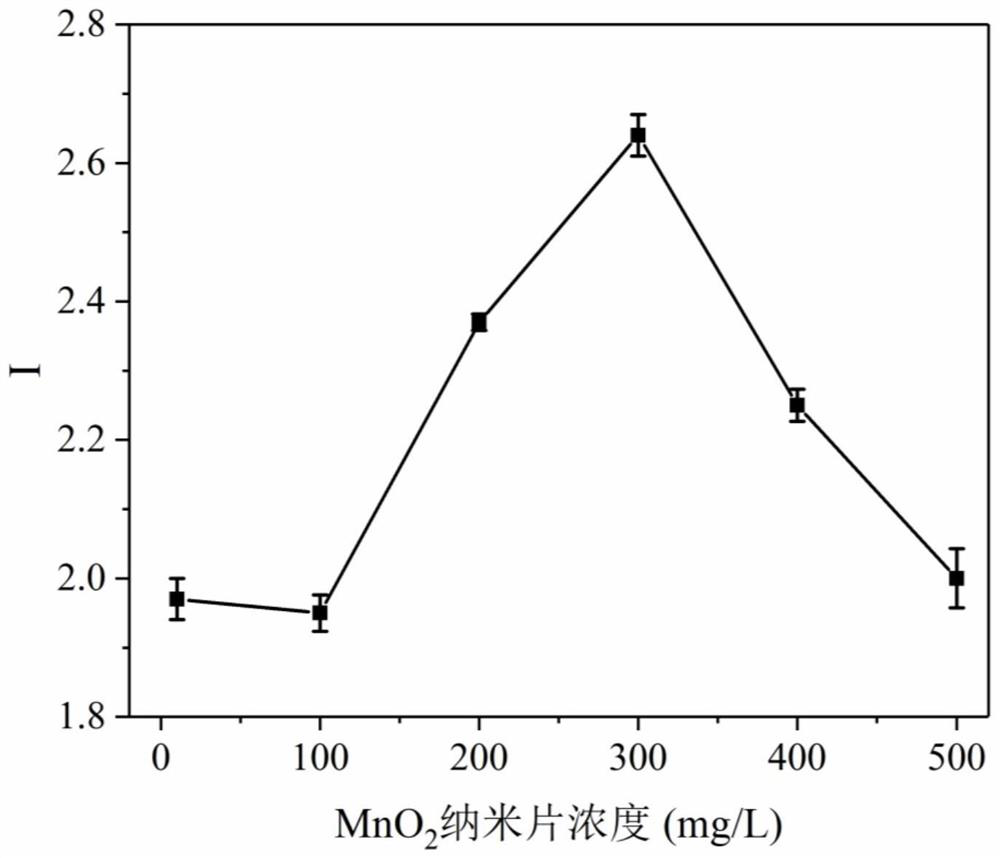Method for detecting solanine in food by using double-optical signal ratio sensor system
A technology of solanine and sensor, which is applied in chemical instruments and methods, luminescent materials, fluorescence/phosphorescence, etc., can solve the problems of not being able to further determine whether the sample is edible or not, and the content of solanine has not been determined, and achieve excellent light absorption performance. , reduce the cost of detection, optimize the effect of signal strength
- Summary
- Abstract
- Description
- Claims
- Application Information
AI Technical Summary
Problems solved by technology
Method used
Image
Examples
Embodiment 1
[0043] S1. Preparation of MnO 2 Nanosheets;
[0044] S1.1: Dissolve sodium dodecylbenzenesulfonate (0.5M, 5mL), sulfuric acid (0.1M, 0.25mL) and absolute ethanol (3.5mL) in ultrapure water, heat to 90°C and stir for 30min. Then potassium permanganate solution (0.05M, 2 mL) was slowly added, and a reddish-brown solution b was obtained after it was fully reacted.
[0045] S1.2: After the solution b was cooled to room temperature, the supernatant was discarded after centrifugation at 9000 rpm for 10 min, and the precipitate was eluted with ultrapure water and ethanol three times and then dried. Finally, the MnO 2 Nanosheets are uniformly dispersed in ultrapure water to obtain MnO 2 The nanosheet stock solution (1g / L) was stored at 4°C for later use;
[0046] Characterization of MnO using TEM 2 The structure and morphology of the nanosheets are given by figure 1 It can be seen that the prepared MnO 2 The nanosheets exhibit a sheet-like structure. At an excitation wavelengt...
Embodiment 2
[0062] Based on the dual optical signal ratio sensing system to detect solanine, the specific steps are as follows:
[0063] S1.1: 200 μL of AChE solution with a concentration of 700.00 U / L, 200 μL of ATCh solution with a concentration of 20 mM, and 200 μL of MnO with a concentration of 300 mg / L under heating in a water bath at 35 °C 2 The nanosheet dilution solution, 200 μL of CDs stock solution with a concentration of 10 mg / L and 1200 μL of ultrapure water were mixed evenly, and after incubating for 40 min, the fluorescence and second-order scattering signals of the mixed solution were detected at the excitation wavelength of 340 nm, and the spectra were recorded. Take 200 μL of solanine with a concentration of 300 μg / L, 200 μL of AChE solution with a concentration of 700.00U / L, 200 μL of ATCh solution with a concentration of 20 mM, and 200 μL of MnO with a concentration of 300 mg / L 2 Nanosheet dilution solution, 200 μL of CDs stock solution with a concentration of 10 mg / L, ...
Embodiment 3
[0070] Based on the dual optical signal ratio sensing system to detect solanine in actual potato samples, the specific steps are as follows:
[0071]S1.1: 1 g of fresh potato sample was cut into small pieces, mixed with 3 mL of ultrapure water, and ground into a homogenate, 16 mL of acetonitrile was added to the mixture, and the mixture was vortexed for 5 min and allowed to stand for 30 min. The supernatant was collected after centrifugation at 5000 rpm for 10 min. Then, the solution was concentrated to 1 mL by nitrogen purging to obtain an extract containing solanine, which was recorded as the sample solution to be tested.
[0072] S1.2: Under heating in a 35°C water bath, take 200 μL of the sample solution to be tested, 200 μL of AChE solution with a concentration of 700.00 U / L, 200 μL of ATCh solution with a concentration of 20 mM, and 200 μL of MnO with a concentration of 300 mg / L 2 Nanosheet dilution solution, 200 μL of CDs stock solution with a concentration of 10 mg / L,...
PUM
| Property | Measurement | Unit |
|---|---|---|
| recovery rate | aaaaa | aaaaa |
Abstract
Description
Claims
Application Information
 Login to View More
Login to View More - R&D
- Intellectual Property
- Life Sciences
- Materials
- Tech Scout
- Unparalleled Data Quality
- Higher Quality Content
- 60% Fewer Hallucinations
Browse by: Latest US Patents, China's latest patents, Technical Efficacy Thesaurus, Application Domain, Technology Topic, Popular Technical Reports.
© 2025 PatSnap. All rights reserved.Legal|Privacy policy|Modern Slavery Act Transparency Statement|Sitemap|About US| Contact US: help@patsnap.com



